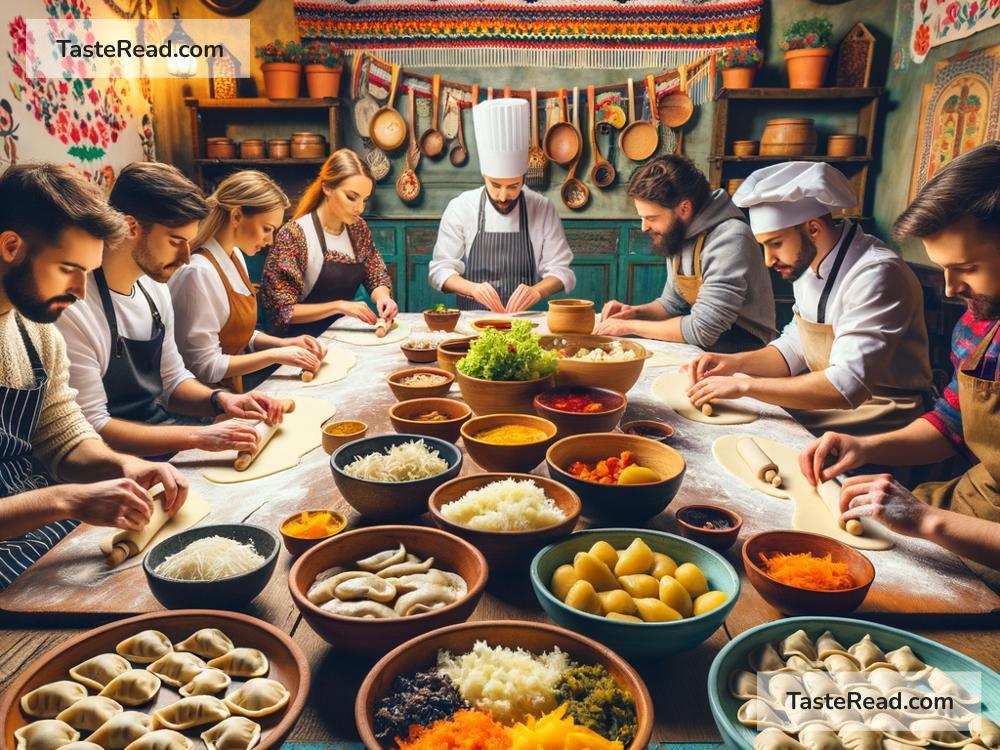Journeying Through Authentic Polish Pierogi Workshops in Krakow, Poland
When you think of Poland, one food comes to mind for many visitors: pierogi! These delicious dumplings are a national treasure, loved by locals and tourists alike. Stuffed with various fillings such as potatoes, cheese, mushrooms, meat, or even fruits, pierogi can be sweet or savory, and they are enjoyed as part of family dinners and festive celebrations.
If you’re visiting Krakow, the cultural capital of Poland, there’s nothing better than getting hands-on experience in making pierogi while learning about Polish history and traditions. Joining an authentic pierogi workshop in Krakow is not just about preparing food; it’s an adventure that connects you to Poland’s heart and soul. So, grab a rolling pin and let’s dive into this exciting journey!
Why Krakow Is the Ideal Place to Learn About Pierogi?
Krakow is full of charm and personality, from its cobblestone streets to its historic Old Town and lively markets. It’s also the best place to learn about Polish culinary traditions, as it has a rich food culture influenced by centuries of history, trade, and neighboring countries. Krakow is home to countless restaurants serving pierogi, but nothing compares to the experience of rolling out dough, filling it, and cooking it yourself.
Poles take their pierogi seriously, with recipes often passed down from generation to generation. Every dough fold and filling has a story behind it. That’s why a pierogi workshop in Krakow is more than just a cooking class—it’s a cultural immersion and a delicious window into the lives of Polish families.
What Happens in a Pierogi Workshop?
A pierogi workshop is a fun activity designed for beginners, food enthusiasts, and anyone curious about Polish culture. Here’s a step-by-step guide to what you can expect when you book a session:
Step 1: Meet Your Teacher and Learn the History
When you arrive at the workshop, you’ll likely be welcomed by a friendly local chef or cook who serves as your teacher. They will begin by introducing the art of pierogi-making and explaining the history behind these amazing dumplings. You’ll learn fun facts, such as how pierogi were once considered peasant food but eventually gained popularity across all social classes.
The teacher might tell you about classic pierogi types, like pierogi ruskie (stuffed with mashed potatoes and cheese) or pierogi z mięsem (filled with minced meat). If you prefer sweeter treats, you’ll hear about pierogi z owocami (fruit pierogi) and how they’re often served with a dollop of sour cream and sugar.
Step 2: Prepare the Dough
The magic begins with the dough! You’ll roll up your sleeves and mix basic ingredients such as flour, water, salt, and a bit of oil. With guidance from your instructor, you’ll knead the dough until it’s smooth, stretchy, and ready to work with. Don’t worry if it feels tricky—your teacher will share tips and tricks to help you master the technique.
Step 3: Create Your Fillings
Next comes the fun part: making the fillings! Common savory fillings include mashed potatoes mixed with cheese, mushrooms sautéed with onions, and seasoned minced meat. If you’re feeling adventurous, there might even be an option to experiment with sweet fillings like strawberries, blueberries, or cherries paired with sugar.
It’s fascinating to see how a few simple ingredients can turn into mouthwatering flavors. Your instructor will also give you advice on balancing taste and texture while ensuring the filling doesn’t overpower the delicate dough.
Step 4: Fold and Shape the Pierogi
Now it’s time to put the pieces together! You’ll roll out the dough with a rolling pin, cut it into small circular shapes, add a spoonful of filling, and fold the edges together to make a dumpling. Sealing the edges securely is important so the filling doesn’t leak during cooking. Many locals create decorative edge patterns by pinching or crimping the dough—something you’ll get to try too.
Step 5: Cook and Taste
Once you’ve shaped your pierogi, they’re ready to cook. You’ll boil them in water until they float to the surface, which only takes a few minutes. In many workshops, you’ll also learn how to fry the pierogi for an extra golden and crispy layer—a technique often used with savory pierogi.
Finally, the best part: tasting your creations. Whether topped with sour cream, butter, or fried onions, your homemade pierogi will feel like a celebration of your effort.
Why This Experience Is Special
Authentic pierogi workshops are more than just cooking lessons—they are a chance to experience traditional Polish hospitality. You’ll connect with locals, share laughter around the table, and leave with a sense of accomplishment (and a full belly). Workshops often take place in cozy kitchens or cultural spaces, creating a warm and inviting atmosphere.
Practical Tips for Joining a Pierogi Workshop
- Book in Advance: Workshops can fill up quickly, especially during the tourist season.
- Come Hungry: You’ll be making (and eating) a lot of pierogi.
- Feel Free to Ask Questions: Your teacher will be happy to explain techniques or tell more about Polish food traditions.
- Bring an Open Mind: Cooking pierogi is an adventure—embrace the imperfections and have fun!
Conclusion
Joining a pierogi workshop in Krakow is a fantastic way to dive into Polish culture. As you roll and fold dumpling dough, you’ll not only create delicious food but also connect with the stories and traditions that make Poland unique. The experience is perfect for solo travelers, couples, families, or groups of friends—it’s hands-on, memorable, and, most importantly, delicious!
If you’re planning a trip to Krakow, don’t miss out on this unforgettable activity. You’ll leave with new cooking skills, fond memories, and perhaps a little extra flour dust on your shirt—a true sign of a successful pierogi-making day!


